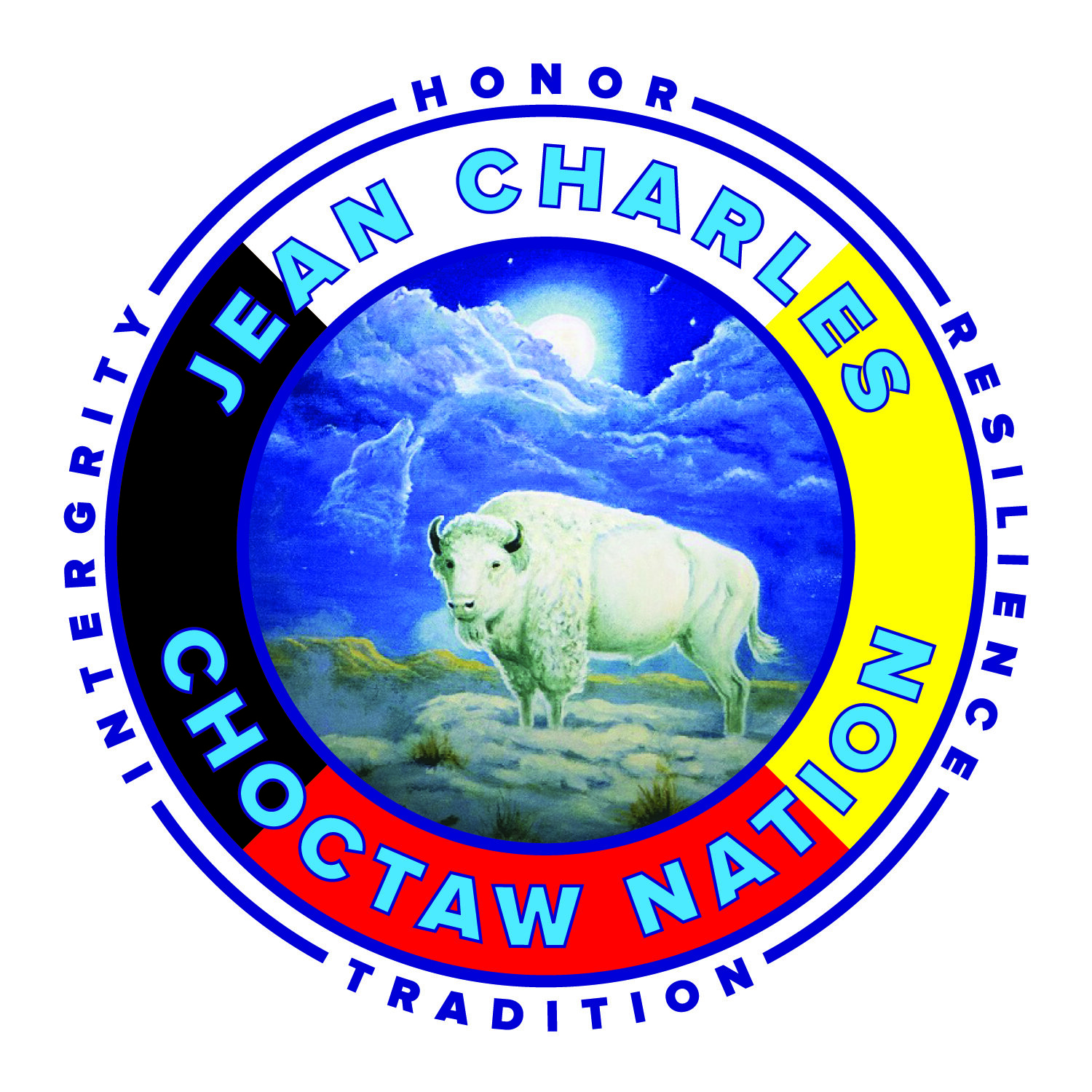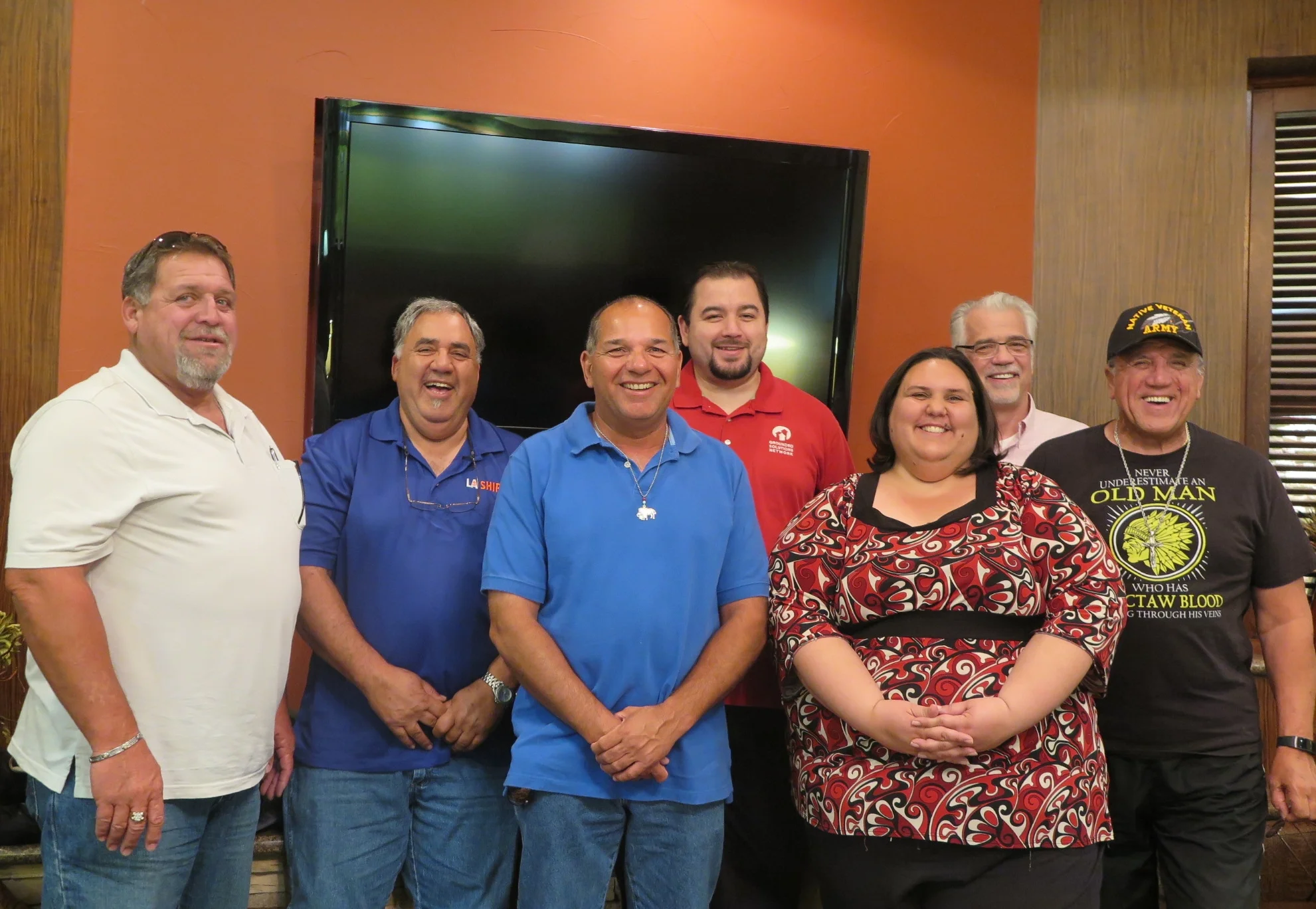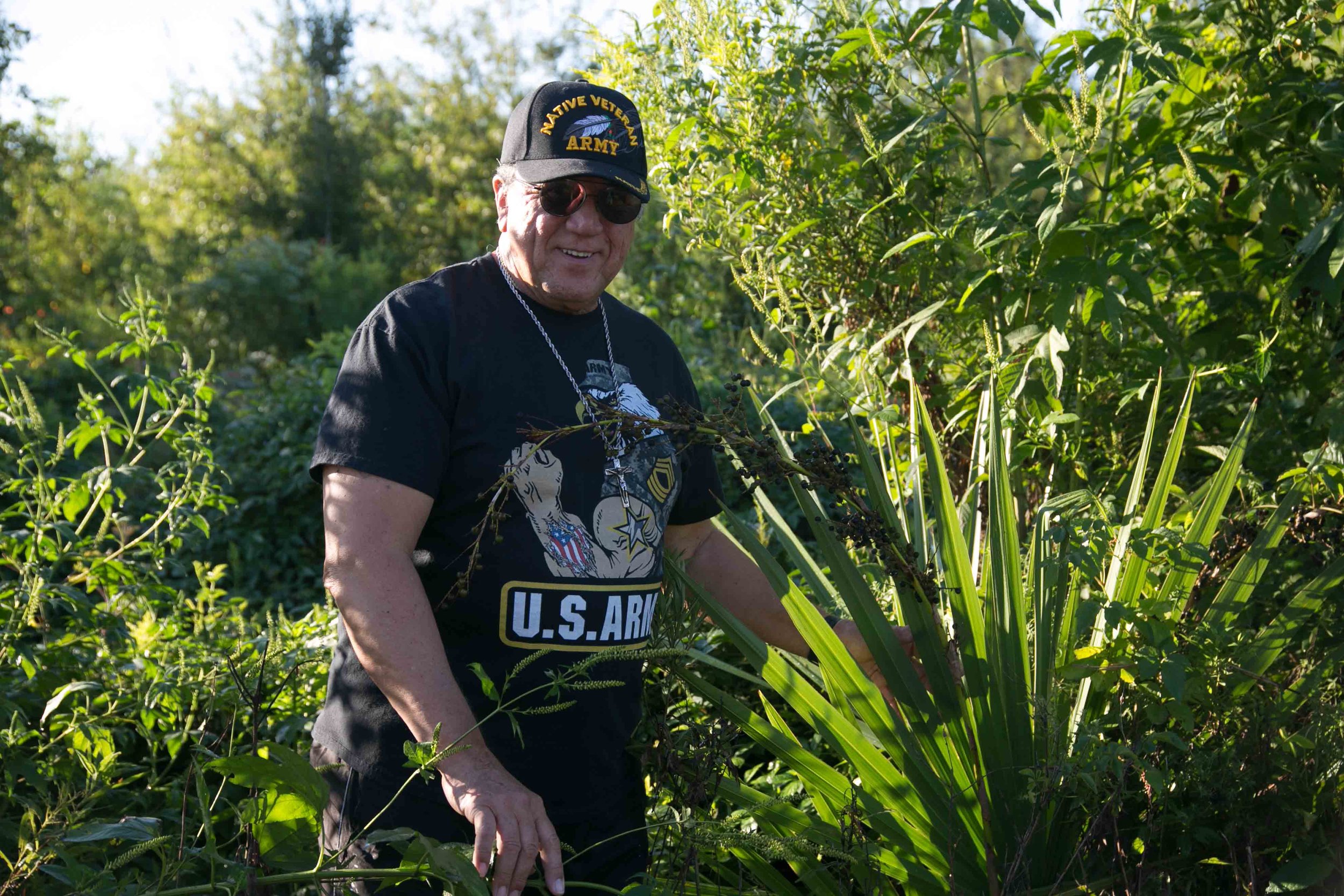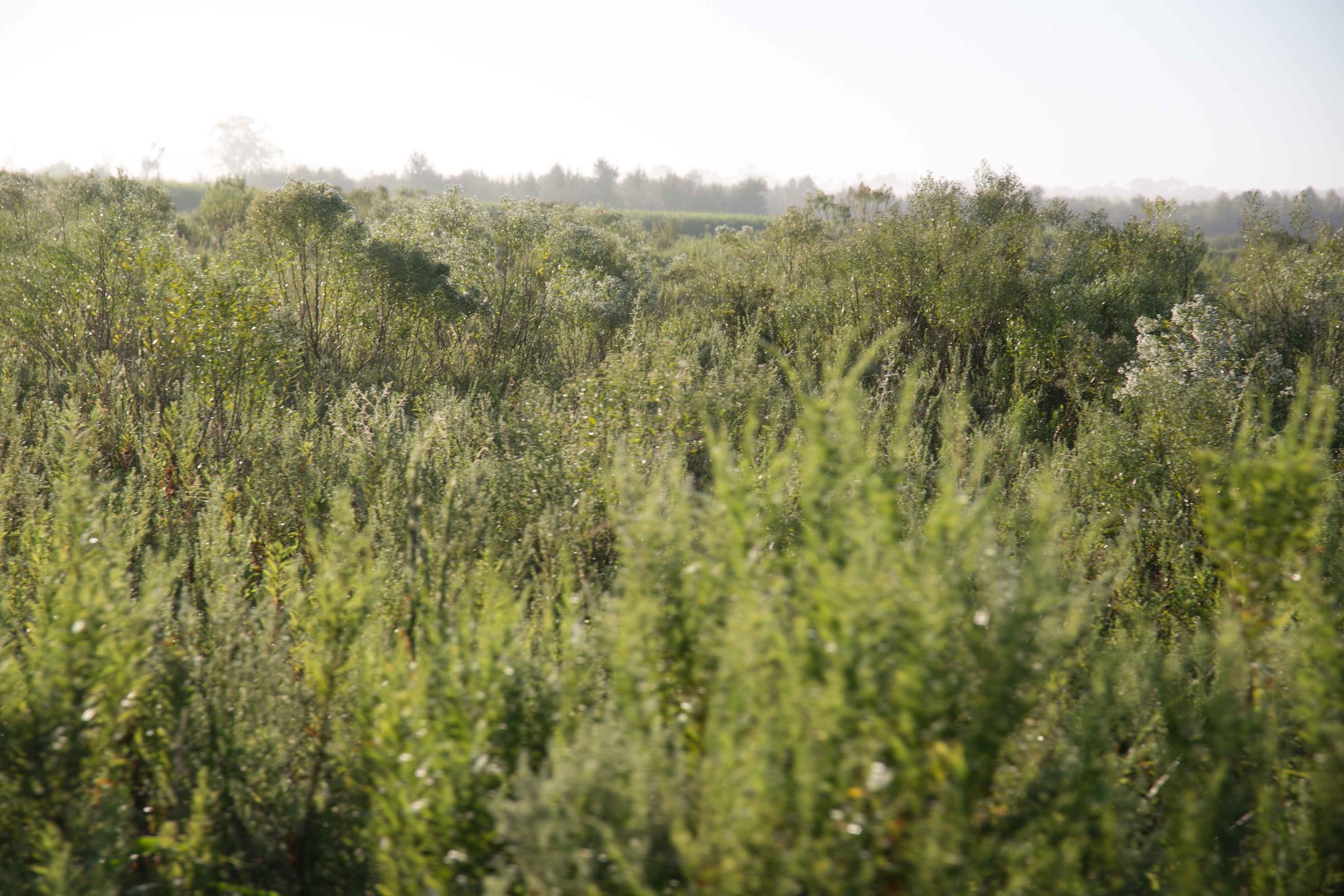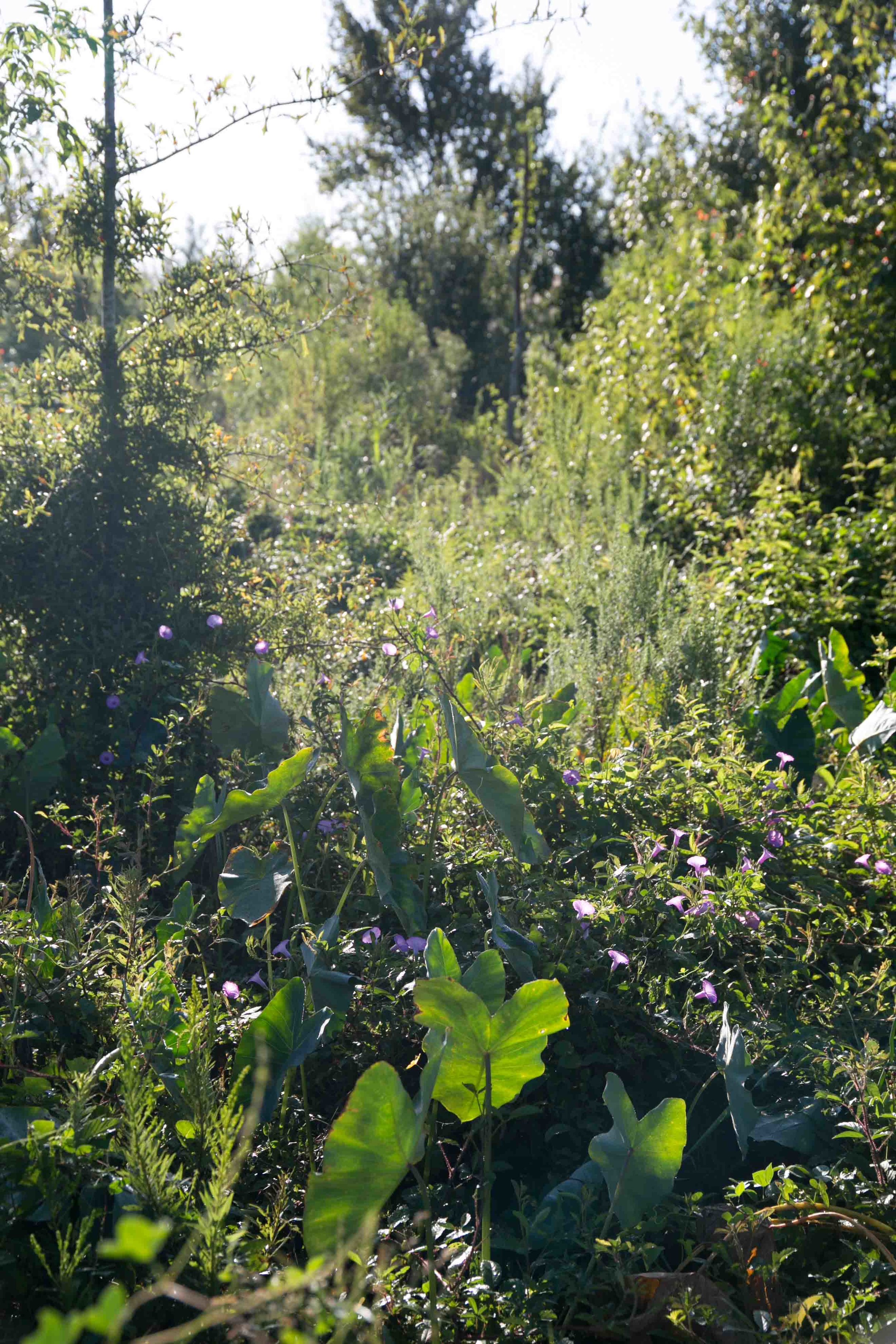Tribal Resettlement
Our tribal resettlement is a living and active bridge from our ancestral Island, which is rapidly eroding, to a sustainable future for the Isle de Jean Charles band of Biloxi-Chitimacha-Choctaw Tribe. After the United States Army Corps of Engineers realigned the Morganza to the Gulf Hurricane Protection Levee in 2001, leaving the Island out, the Tribal Council made the difficult decision to resettle.
For nearly two decades we have been organizing. We see resettlement as the best way to reunite our displaced tribal members and rekindle our traditional life-ways. Our relationships, ways of life, networks of care, and identity will be supported in a community center, museum, and gathering areas. Oral teaching and learning of our histories will be reinvigorated in our childcare and educational spaces. Community gardens will serve as catalysts to recreate the self-sustaining society we once had. Our library, seed-saving program, traditional healing herbs, gardens, and market will nurture our Tribe. Our resettlement provides safe and sustainable housing for those at risk of flooding on the Island and tribal members who have been already been displaced.
Through our tribal resettlement, we embrace our role as a teaching community and hope to support others dealing with environmental disaster. We will continue to stand alongside other tribal communities who are providing essential leadership in building resilience to the effects of climate change. We also stand with the coastal communities around the nation grappling with our changing climate and related hazards. Our existing collaborations with local colleges, universities, nonprofits, communities, and other tribes are the essential building blocks to providing a model for resettlement and sustainability.
We have worked towards our tribal resettlement for nearly 20 years. For more information on our long road to resettlement, see below:
The Tribe led a collaborative project with with our partners to create a Tool Kit for communities undergoing environmental and developmental pressures. The final product is the:
A Community Field Guide to Engagement, Resilience, and Resettlement: Community regeneration in the face of environmental and developmental pressures.
"Research reported in this document was supported by the Gulf Research Program of the National Academies of Sciences, Engineering, and Medicine under award number 200008164. The content is solely the responsibility of the authors and does not necessarily represent the official views of the Gulf Research Program or the National Academies of Sciences, Engineering, and Medicine."
Sea grant Spirit of Community - Community of Practice Award, 2016
We are honored to have been awarded a Mississippi - Alabama Sea Grant Consortium award for our Tribal Resettlement planning activities and our efforts to build partnerships for climate resilience.
Grounded Solutions Network Initiative, 2017
Our tribe is collaborating with the Grounded Solutions Network and Burlington Associates to secure sustainable and permanently affordable housing.
Citizens' Institute on Rural Design, 2016-2017
The Isle de Jean Charles Tribe has partnered with Citizens' Institute on Rural Design to organize place-making workshops to support the planning of our tribal center.
Pacific Risk Management 'Ohana (Primo), 2016
Chief Naquin presented resettlement plans at PRiMO 2016, sharing a panel with the Prime Minister of Tuvalu, Honorable Enele Sosene Sopoaga, and Former President of Kiribati, Honorable Anote Tong.
House Natural Resources Committee Forum, 2016
May 17, 2016. Tribal Advisor, Démé Naquin provided testimony to the U.S. House Natural Resources Committee to garner support for the tribal resettlement.
National Disaster Resilience Competition, 2016
January 21, 2016. Our tribal resettlement was awarded Housing and Urban Development support through the National Disaster Resilience Competition.
Natural Hazards Center's Natural Hazards Workshop, 2015
June 22-25, 2015. Chief Albert Naquin attended the Natural Hazards workshop in Bloomfield, Colorado. In addition to participating in the many workshops and panels, Chief Naquin shared the Tribe's plans to resettle during a panel entitled, "Native American Perspectives on Disaster and Resilience"
IDJC-LOwlander Resettlement Planning Team workshop, 2016
January 18-19, 2016. The Isle de Jean Charles band of Biloxi-Chitimacha-Choctaw Tribe and the Lowlander Center organized a two day workshop with indigenous leaders from around the world, architects, planners, students, and community development experts to contribute to the resettlement planning process.
Isle de Jean Charles Resettlement Education and Outreach Tour, 2015
April 19-22, 2015. Tribal leaders partnered with Can't Stop the Water director Rebecca Farris, Temple University Ph.D. student Nathan Jessee, Dr. Kristina Peterson of Lowlander Center, Dr. Julie Maldonado, and Bob Gough for a tour of film screenings and panel discussions to build support for our resettlement plans.
Clinton Global Initiative Proposal Planning, 2014
2013-2014. The Isle de Jean Charles band of Biloxi-Chitimacha-Choctaw Tribe and the Lowlander Center conducted multiple workshops and knowledge-sharing sessions related to sustainable tribal resettlement in order to submit a proposal for the 2014 Clinton Global Initiative.
Tribe presents Resettlement plans to Terrebonne Parish, 2009
December 9, 2009. The Isle de Jean Charles band of Biloxi-Chitimacha-Choctaw Tribe presented tribal resettlement plans to the Terrebonne Parish Council, establishing important local and regional partnerships on our path to resettlement.
IDJC Tribal Council Decides to Resettle Tribe, 2002
The Isle de Jean Charles band of Biloxi-Chitimacha-Choctaw Tribal Council voted to resettle their Tribe further inland. The difficult decision came after the U.S Army Corps of Engineers Morganza to the Gulf Hurricane Protection Levee Re-alignment excluded the Island from its protection.
Traditional Chief Albert Naquin explores the new Tribal Resettlement Site.
